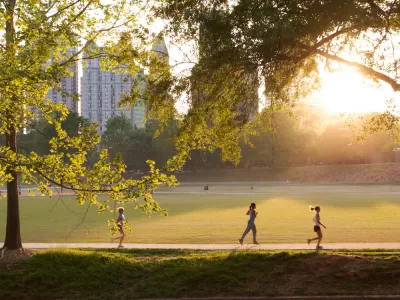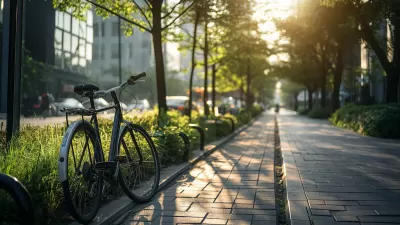What makes for a healthy place? Kaid Benfield points to density of dwellings, intersections and public transport, plus access to parks.

"Scientists are learning more and more about how where we live affects the amount of exercise we get, and thus how fit and healthy we are likely to be. In general, city dwellers are particularly well placed to get regular exercise if they can take care of some or all of their daily errands without getting into a car: walking is good for us, and so is taking public transportation, because almost every transit trip begins and ends with a walking trip."
"The subject fascinates me, and I have written about it often, most recently with respect to the demand for walkable neighborhoods and some of the city planning tools that can help provide them. (See also this article from 2014.) A massive Utah study from 2008 reported on WebMD found that “people in the study who lived in the most walkable neighborhoods weighed an average of 8 pounds less than people who lived in the least walkable areas.” (The full study is here.)"
Benfield goes on to review recent research pointing to health impacts of residential density, intersection density, public transportation density, and access to parks.
FULL STORY: Active, Healthy Neighborhoods

Planetizen Federal Action Tracker
A weekly monitor of how Trump’s orders and actions are impacting planners and planning in America.

San Francisco's School District Spent $105M To Build Affordable Housing for Teachers — And That's Just the Beginning
SFUSD joins a growing list of school districts using their land holdings to address housing affordability challenges faced by their own employees.

The Tiny, Adorable $7,000 Car Turning Japan Onto EVs
The single seat Mibot charges from a regular plug as quickly as an iPad, and is about half the price of an average EV.

Seattle's Plan for Adopting Driverless Cars
Equity, safety, accessibility and affordability are front of mind as the city prepares for robotaxis and other autonomous vehicles.

As Trump Phases Out FEMA, Is It Time to Flee the Floodplains?
With less federal funding available for disaster relief efforts, the need to relocate at-risk communities is more urgent than ever.

With Protected Lanes, 460% More People Commute by Bike
For those needing more ammo, more data proving what we already knew is here.
Urban Design for Planners 1: Software Tools
This six-course series explores essential urban design concepts using open source software and equips planners with the tools they need to participate fully in the urban design process.
Planning for Universal Design
Learn the tools for implementing Universal Design in planning regulations.
Smith Gee Studio
City of Charlotte
City of Camden Redevelopment Agency
City of Astoria
Transportation Research & Education Center (TREC) at Portland State University
US High Speed Rail Association
City of Camden Redevelopment Agency
Municipality of Princeton (NJ)




























